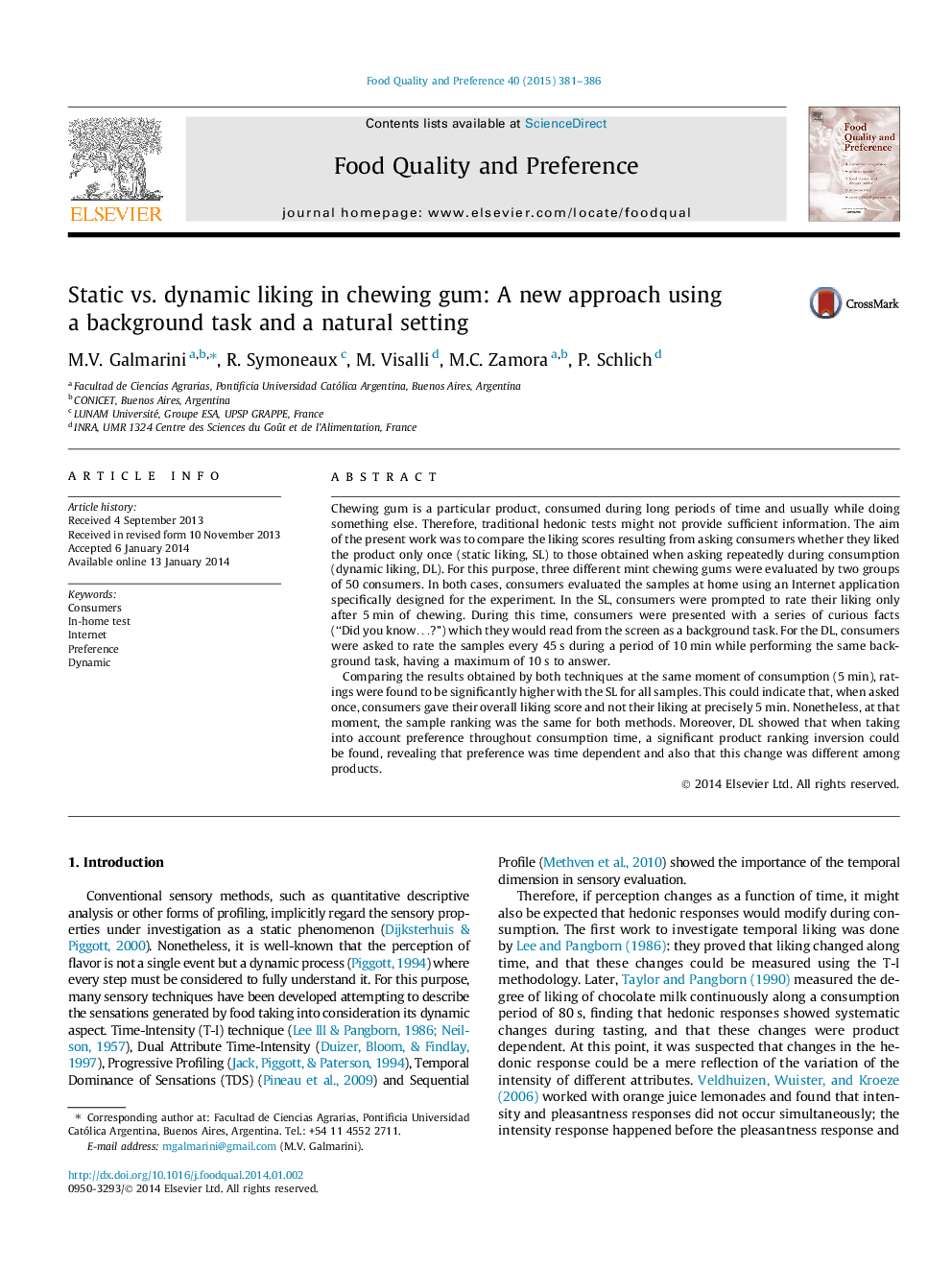| کد مقاله | کد نشریه | سال انتشار | مقاله انگلیسی | نسخه تمام متن |
|---|---|---|---|---|
| 4317051 | 1613157 | 2015 | 6 صفحه PDF | دانلود رایگان |
• Information on static and dynamic liking on chewing gum were compared.
• Data was collected in in-home conditions and consumers read as a background task.
• Protocols gave different information on product liking but the same product ranking.
• The moment at which preference becomes discriminant among samples could be obtained.
• A dynamic study of chewing gum preference would be pertinent for product development.
Chewing gum is a particular product, consumed during long periods of time and usually while doing something else. Therefore, traditional hedonic tests might not provide sufficient information. The aim of the present work was to compare the liking scores resulting from asking consumers whether they liked the product only once (static liking, SL) to those obtained when asking repeatedly during consumption (dynamic liking, DL). For this purpose, three different mint chewing gums were evaluated by two groups of 50 consumers. In both cases, consumers evaluated the samples at home using an Internet application specifically designed for the experiment. In the SL, consumers were prompted to rate their liking only after 5 min of chewing. During this time, consumers were presented with a series of curious facts (“Did you know…?”) which they would read from the screen as a background task. For the DL, consumers were asked to rate the samples every 45 s during a period of 10 min while performing the same background task, having a maximum of 10 s to answer.Comparing the results obtained by both techniques at the same moment of consumption (5 min), ratings were found to be significantly higher with the SL for all samples. This could indicate that, when asked once, consumers gave their overall liking score and not their liking at precisely 5 min. Nonetheless, at that moment, the sample ranking was the same for both methods. Moreover, DL showed that when taking into account preference throughout consumption time, a significant product ranking inversion could be found, revealing that preference was time dependent and also that this change was different among products.
Journal: Food Quality and Preference - Volume 40, Part B, March 2015, Pages 381–386
